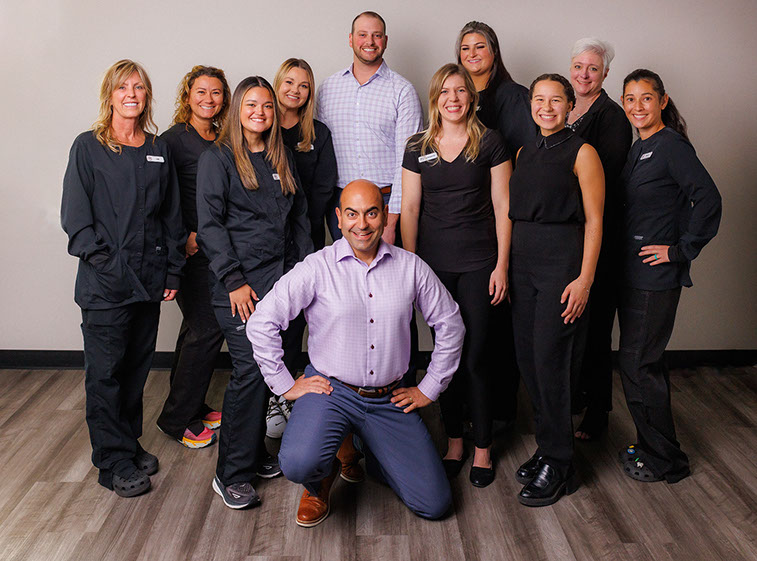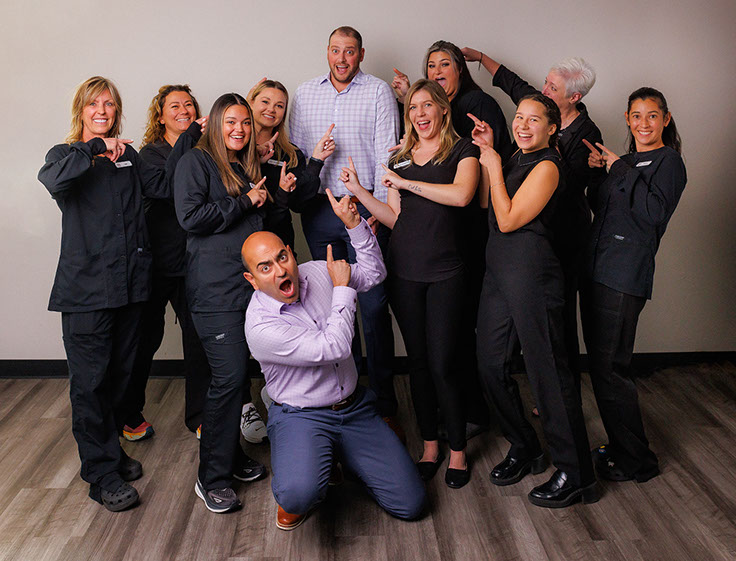Early Orthodontic Treatment
Timing is everything – even when it comes to your child’s orthodontic treatment. “Early” treatment, also called “interceptive” treatment, means treatment that is performed while some baby teeth are still present.
At Brunswick Orthodontics, Dr. Zack takes a holistic approach to treatment planning, prioritizing not only straight teeth but also overall health and well-being. With an airway-focused mindset, he aims to optimize breathing and facial development, helping patients not only achieve beautiful smiles but also thrive in their daily lives.
Dr. Zack and the American Association of Orthodontists (AAO) recommend that your child’s first check-up with an orthodontist be performed when an orthodontic problem is first recognized, but no later than age 7. Why age 7? By then, your child has enough permanent teeth for an orthodontist to evaluate the developing teeth and the jaws, which in turn can provide a wealth of information. AAO orthodontists are trained to spot subtle problems even in young children.
There are generally three outcomes of an initial check-up:
- No treatment is expected to be necessary.
- Treatment may be needed in the future, so the child will be followed periodically while the face and jaws continue to grow.
- There is a problem that lends itself to early treatment.
While there are many orthodontic problems that orthodontists agree are best treated after all permanent teeth have come in, early treatment can be in a patient’s best interests if their problem is one that could become more serious over time if left untreated. The goal of early treatment is to intercept the developing problem, eliminate the cause, guide the growth of facial and jaw bones, and provide adequate space for incoming permanent teeth. A patient may require a second course of treatment after all permanent teeth have come in to move those teeth into their best positions.
The kinds of problems orthodontists may recommend treating while a child still has some baby teeth include:
- Underbites – when the lower front teeth are ahead of the upper front teeth
- Crossbites – when the jaw shifts to one side
- Very crowded teeth
- Excessively spaced teeth
- Extra or missing teeth
- Teeth that meet abnormally, or don’t meet at all
- Thumb-, finger-, or pacifier- sucking that is affecting the teeth or jaw growth
Some of these orthodontic problems are inherited, while others may result from accidents, dental disease, or abnormal swallowing.
Early orthodontic treatment can take many forms. Dr. Zack could prescribe a fixed or removable “appliance” – a device used to move teeth, change the position of the jaw, or hold teeth in place in order to bring about desirable changes. Sometimes no appliances are necessary. Rather, removal of some baby teeth may help the permanent teeth erupt better. The extractions will be timed to take best advantage of a patient’s growth and development.
Regardless of how treatment goals are reached, the bottom line is that some orthodontic problems may be easier to correct if they are found and treated early. Waiting until all the permanent teeth have come in, or until facial growth is nearly complete, may make correction of some problems more difficult.

Book Your Visit!
About
Clear
Aligners
About
Clear
Aligners








